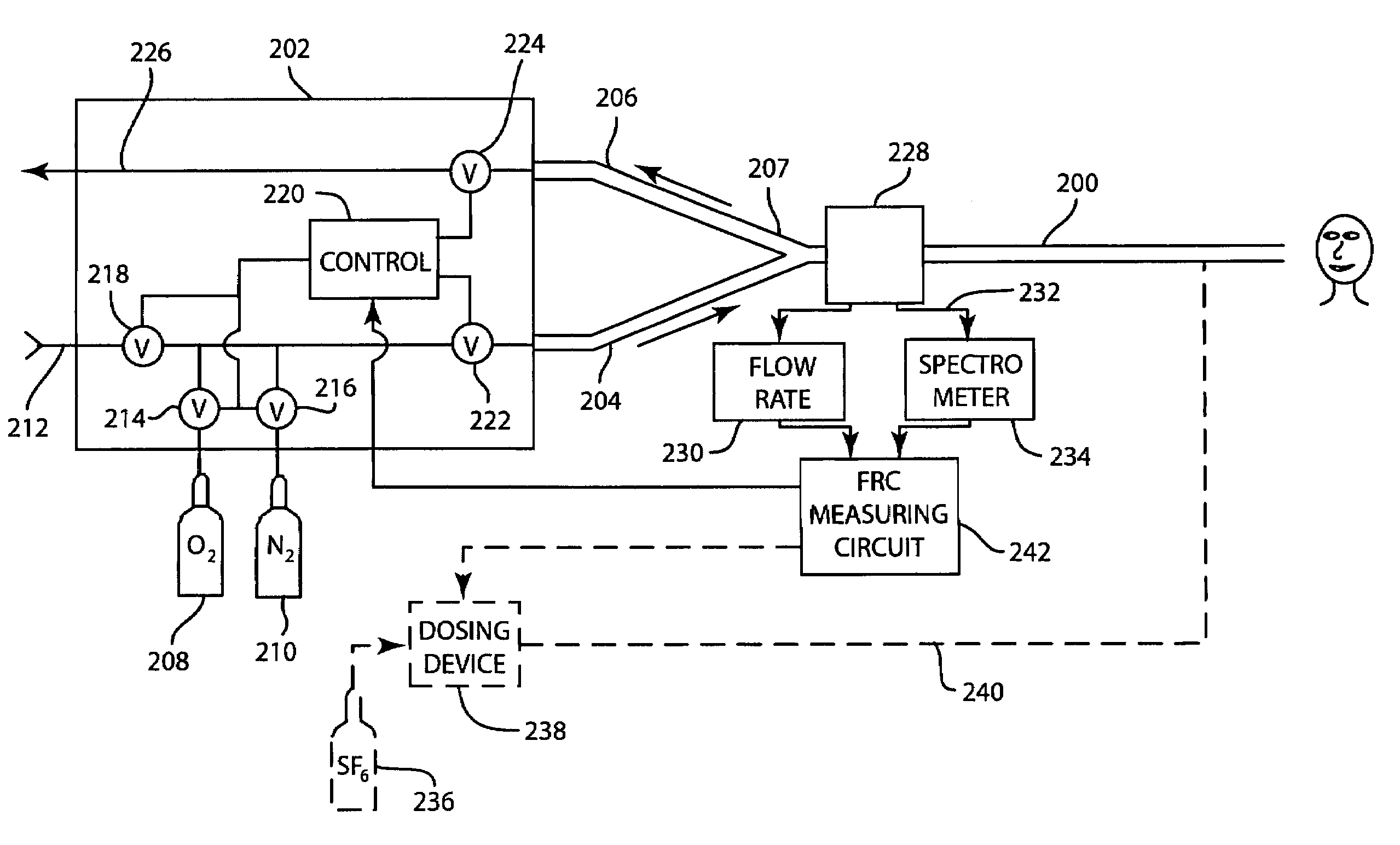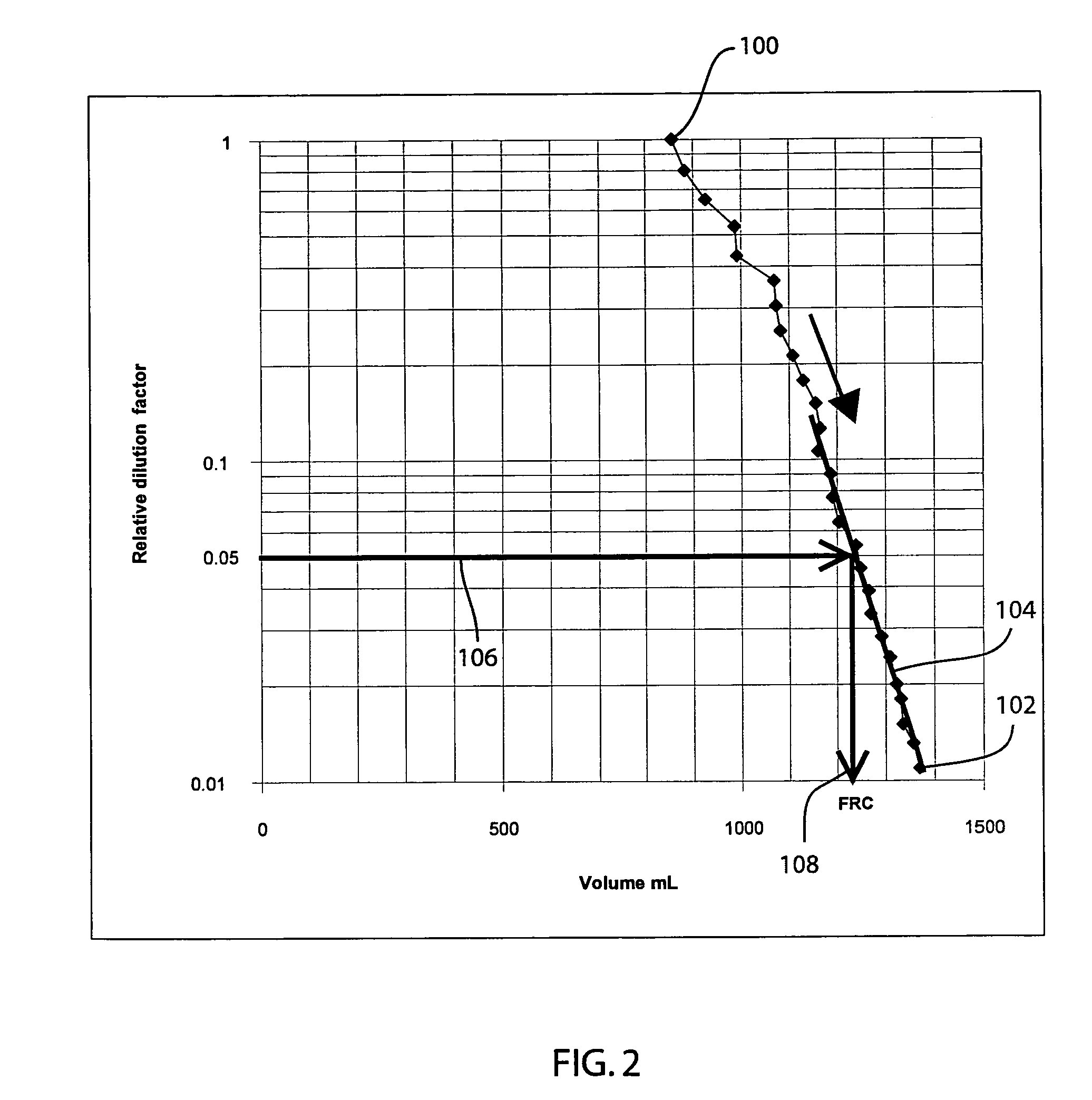Method and apparatus for determining functional residual capacity of the lungs
a functional residual capacity and lungs technology, applied in the direction of respiratory organ evaluation, diagnostic recording/measuring, operating means/releasing devices for valves, etc., can solve the problems of less useful, unsatisfactory gas mixing, and homogeneous actual lung, and achieve the effect of ventilating the lung profil
- Summary
- Abstract
- Description
- Claims
- Application Information
AI Technical Summary
Benefits of technology
Problems solved by technology
Method used
Image
Examples
Embodiment Construction
[0022]FIG. 1 shown FRC measurement process of the present invention. Following the beginning of the measurement process at step 10, the existing or baseline concentration of an inert tracer gas in the lungs of the subject is ascertained. This is done at step 20 by determining the end-tidal (ET) concentration of the tracer gas. For exemplary purposes, nitrogen (N2), used as the tracer gas so the measured concentration is ETN2. This step may, however, be omitted if the baseline concentration is otherwise known or obvious. This could be the situation where the initial concentration is e.g. zero.
[0023]After the determination of step 20, the measurement of FRC can be started by initiating a change in the inspired gas concentration of nitrogen at step 30. In FIG. 1, this is shown as being carried out by altering the concentration of inspired oxygen FiO2 since this can be easily accomplished when the subject is breathing with the aid of a ventilator. For a given induced VA, increasing the ...
PUM
 Login to View More
Login to View More Abstract
Description
Claims
Application Information
 Login to View More
Login to View More - R&D
- Intellectual Property
- Life Sciences
- Materials
- Tech Scout
- Unparalleled Data Quality
- Higher Quality Content
- 60% Fewer Hallucinations
Browse by: Latest US Patents, China's latest patents, Technical Efficacy Thesaurus, Application Domain, Technology Topic, Popular Technical Reports.
© 2025 PatSnap. All rights reserved.Legal|Privacy policy|Modern Slavery Act Transparency Statement|Sitemap|About US| Contact US: help@patsnap.com



